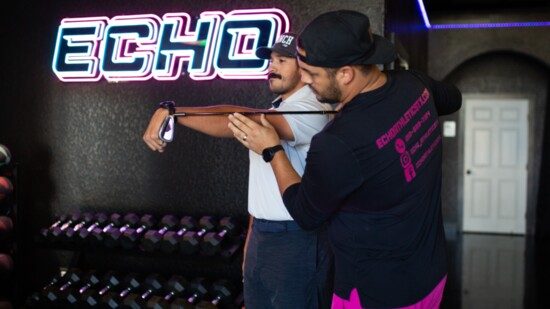Golfers of all levels know the struggle: you hit the links hoping for your best round yet, only to be thwarted by inconsistent shots or nagging aches. But what if the problem isn’t your swing mechanics but your body? Tim Kudla, a Titleist Performance Institute-certified physical therapist at ECHO Physical Therapy and Athletics, is on a mission to bring physical fitness and athletic performance together, offering golfers—and everyone—a way to refine their game by improving mobility, stability, and strength.
What is a TPI Golf Swing Analysis?
The Titleist Performance Institute (TPI) certification equips professionals like Kudla to evaluate golfers not just on their swings but on their bodies’ physical capabilities. “The medical side of TPI focuses on identifying the mobility and stability limitations that might be restricting a player’s swing,” Kudla explains. His assessments dive deep into the body’s mechanics, from thoracic spine rotation to hip flexibility, and how they enhance—or hinder—a golfer’s performance.
Rather than simply watching swings, Kudla conducts a series of mobility and movement tests. These range from simple motions like bending over to touch your toes to more golf-specific tasks, such as maintaining a five-iron stance while rotating your hips. “It’s about uncovering whether a limitation is mobility-related or stability-related,” Kudla says. “That way, we can target the root of the issue and create a tailored plan.”
Common Swing Limitations
Two key areas are often to blame for a less-than-optimal golf swing: the thoracic spine and hips. “The thoracic spine, which is your mid-back, and your hips are designed to handle most of the rotational movement in a swing,” Kudla explains. “When these areas lack mobility, other parts of your body—like your lower back or knees—are forced to compensate, leading to pain and inefficient movement.”
For example, tight hips might cause knee twisting, while a stiff thoracic spine could lead to excessive lumbar spine rotation, increasing the risk of injury. Addressing these issues not only reduces discomfort but can also add power and consistency to a golfer’s swing.
The Process: Screen, Evaluate, Improve
A typical session begins with a comprehensive screening. Kudla observes basic movements and then delves deeper into trouble areas using tests specific to the golf swing. If a limitation is found—such as restricted hip rotation—he designs individualized exercises to address it. “I like to incorporate golf-related tools like clubs or towels into stretches,” Kudla says. “It keeps the exercises relevant and helps players see the connection to their game.”
Improvement is tracked through regular retesting, ensuring that each client’s program delivers measurable progress. Kudla notes, “It’s a simple process: identify the issue, work on it, and see results.”
Why See a Physical Therapist?
While golf coaches excel at fine-tuning swing mechanics, they may overlook physical limitations that could hold players back. Kudla sees his work as complementary to coaching. “A coach assumes you have the mobility and strength to execute what they’re teaching,” he says. “By addressing any dysfunctions first, we set the stage for better results with the coach.”
The best part? You don’t have to be in pain to benefit from an evaluation. “A lot of people think physical therapy is just for injuries,” Kudla notes. “But even if you’re just looking to maximize your potential, a swing analysis can help identify areas for improvement.”
Real Results
Kudla’s clients often report dramatic improvements—not just in their swings but also in their overall physicality. “One golfer told me their yardage increased significantly just from working on mobility,” Kudla shares. “Another lowered their handicap after we focused on thoracic spine and hip flexibility.”
And the benefits aren’t limited to the golf course. Daily activities, from reaching overhead to prolonged desk work, become more manageable with improved mobility and stability. “This is about more than just golf—it’s about improving how your body moves and functions,” Kudla emphasizes.
Beyond Golf: Applications for Other Sports
Kudla’s expertise extends to other sports as well. From baseball to volleyball, many athletes benefit from his evaluation process. “Rotational sports like baseball have a lot in common with golf, while sports like basketball and volleyball focus more on lateral and jumping motions,” Kudla explains. His tailored approach ensures that every athlete—regardless of their sport—receives targeted recommendations to enhance performance.
Take Your Game to the Next Level
Whether you’re struggling with a slice, battling aches, or just looking to add power and precision to your swing, a TPI-certified evaluation could be the game-changer you’ve been seeking. “You don’t have to settle for where you are now,” Kudla says. “With the right exercises and mobility work, you can unlock new levels of performance.”
For golfers in search of that extra edge—or anyone wanting to move better and feel stronger—a physical therapist’s help might just be the ultimate secret weapon.
echoathleticstx.com | 210-589-7314 | 1 FM 3351, Ste. #140
“It’s a simple process: identify the issue, work on it, and see results.”
“You don’t have to settle for where you are now. With the right exercises and mobility work, you can unlock new levels of performance.”
